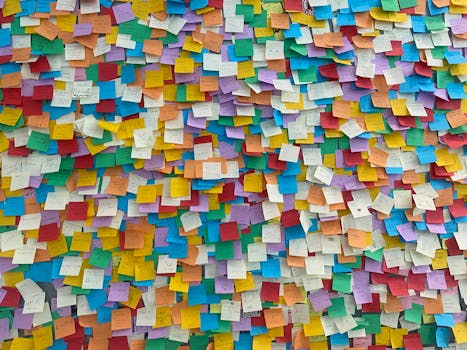Dream and Create Collages with Natural Materials Gathered from Nature
In an age dominated by digital art and technology, the tactile experience of creating art with natural materials offers a refreshing alternative. Collage-making, a technique that involves assembling various materials to create a cohesive artwork, can be enriched by the use of elements sourced directly from nature. This article explores the beauty and benefits of creating collages with natural materials, providing insights into the process, inspiration, and the environmental impact of such artistic endeavors.
The Allure of Natural Materials
Natural materials, such as leaves, flowers, stones, and twigs, bring a unique texture and organic aesthetic to collages. The use of these materials not only enhances the visual appeal but also connects the artist to the environment. Here are some reasons why natural materials are compelling for collage-making:
- Unique Textures: Each material has its own texture, color, and form, allowing for endless creative possibilities.
- Seasonal Variations: The changing seasons provide a diverse palette of materials, from vibrant autumn leaves to delicate spring blossoms.
- Eco-Friendly Art: Using natural materials reduces reliance on synthetic products, promoting sustainability in art.
Gathering Materials: A Mindful Experience
The process of gathering materials can be as rewarding as the creation itself. It encourages mindfulness and a deeper appreciation for nature. Here are some tips for collecting materials:
- Choose Local Areas: Parks, gardens, and nature reserves are excellent places to find materials without harming the environment.
- Be Respectful: Only collect what you need and avoid damaging plants or ecosystems.
- Seasonal Awareness: Different seasons offer different materials; plan your collection trips accordingly.
Techniques for Creating Natural Collages
Once you have gathered your materials, the next step is to start creating. Here are some techniques to consider when making collages with natural elements:
- Layering: Experiment with layering different materials to create depth and interest.
- Color Coordination: Use a color palette that complements the natural hues of your materials for a harmonious look.
- Incorporating Textures: Mix various textures, such as rough bark with smooth petals, to create a dynamic composition.
Case Studies: Artists Who Inspire
Many artists have embraced the use of natural materials in their work, showcasing the beauty and versatility of this medium. For instance:
- Andy Goldsworthy: Known for his ephemeral sculptures made from leaves, stones, and ice, Goldsworthy’s work emphasizes the relationship between art and nature.
- Elisabeth Cummings: An Australian artist who incorporates natural materials into her paintings and collages, Cummings draws inspiration from the landscapes around her.
These artists demonstrate how natural materials can be used to create powerful statements about the environment and our connection to it.
The Environmental Impact of Natural Collage-Making
Creating art with natural materials not only fosters creativity but also promotes environmental awareness. By using materials sourced from nature, artists can highlight the beauty of the natural world and the importance of conservation. Here are some environmental benefits:
- Promotes Sustainability: Using natural materials encourages sustainable practices and reduces waste.
- Raises Awareness: Art can be a powerful tool for raising awareness about environmental issues and inspiring action.
- Encourages Connection: Engaging with nature through art fosters a deeper connection to the environment.
Conclusion: Embrace Your Creativity
Creating collages with natural materials is not just an artistic endeavor; it is a journey that connects us to the earth and encourages mindfulness. By gathering materials from nature, experimenting with techniques, and drawing inspiration from artists who have paved the way, anyone can create beautiful and meaningful collages. As we embrace this form of art, we also promote sustainability and environmental awareness, making our creative expressions a part of a larger conversation about our planet. So, gather your materials, let your imagination run wild, and create something that reflects the beauty of nature.
